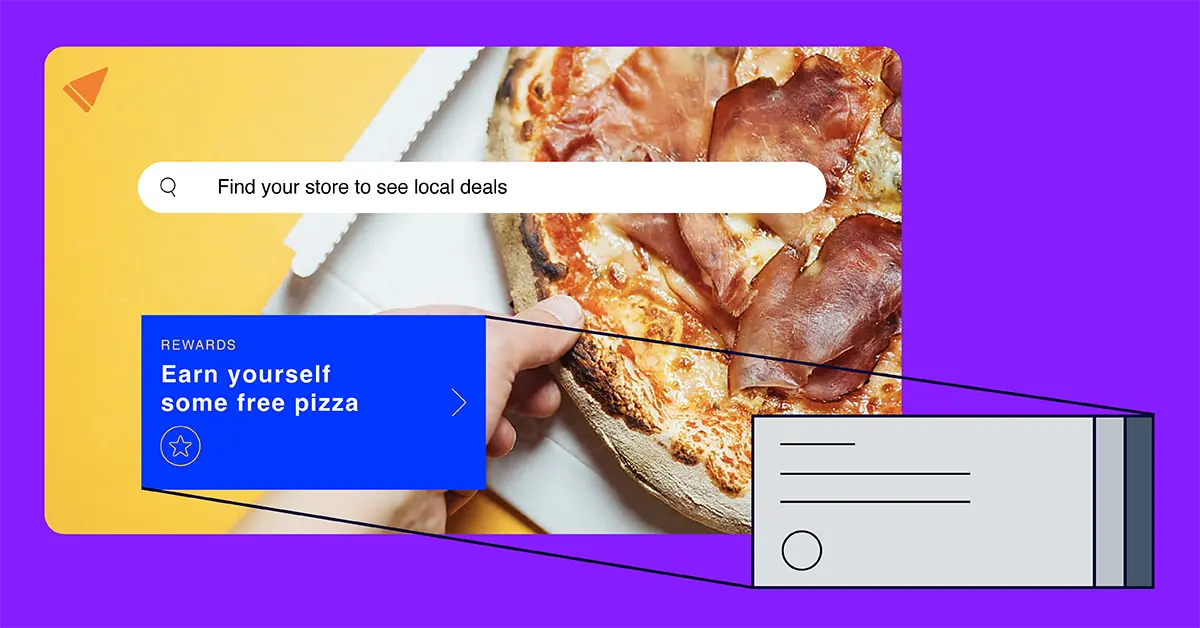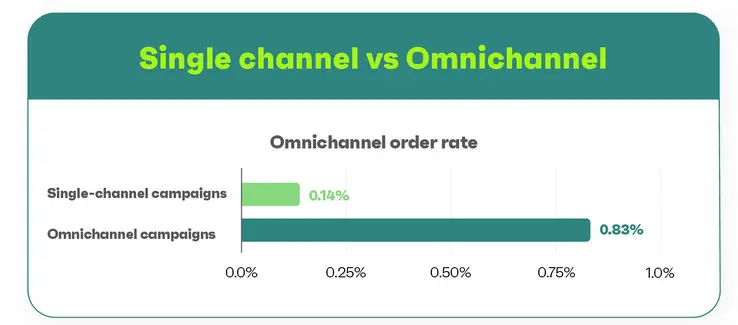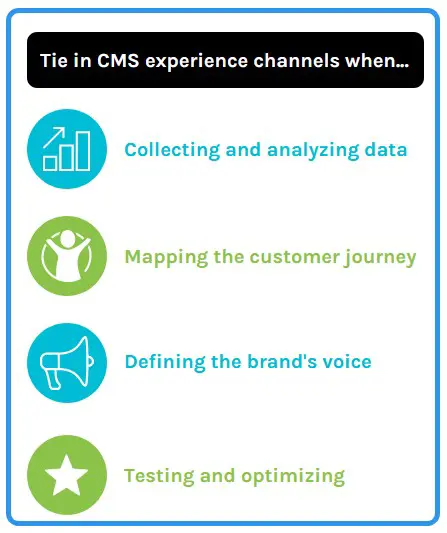How CMS experience channels tie into your digital strategy
Since customers value their experience with a company just as much as the products it offers, understanding and leveraging CMS experience channels is essential.

Content management systems (CMS) play a crucial role in your digital strategy. But, how do CMS experience channels benefit businesses?
Since 80% of customers surveyed valued their experience with a company just as much as the products it offers, understanding and leveraging CMS experience channels is necessary.
Key takeaways:
- A content management system is a solution where a business can create and maintain a website and its functions without coding.
- CMS experience channels are the digital platforms where the management solution makes the content available.
- Benefits of CMS experience channels include increased sales, improved customer service and increased customer lifetime value.
- Your digital strategy has four aspects to tie in CMS experience channels: collecting and analyzing customer data, mapping the buyer journey, defining your brand’s voice and testing, and optimizing.
What are CMS experience channels?
A content management system is a solution where a business can create and maintain a website and its functions without coding. CMS experience channels (also known as omnichannel experiences) are the digital platforms where the management solution makes the content available. Examples of digital channels include:
- a website
- an Internet-of-Things (IoT) interface
- a mobile application
- an email notification
- virtual reality
- social media marketing
- a smartwatch app
As you can see, CMS experience channels can extend to any digital touchpoint the customer interacts with on their buyer journey. To accomplish this, the CMS must be headless. A headless CMS detaches the frontend display from the backend content. By doing so, the content can work with any frontend digital medium, including those mentioned above.
Why tying CMS experience channels into your digital strategy matters
Why is it so important to maximize the number of digital touchpoints customers can access? The principal reason is that customers with multiple channels available spend more. One study showed that campaigns using only one digital medium reported a 0.14% order rate (the number of orders divided by the number of messages sent). In contrast, marketing strategies that used three or more digital channels reported a 0.83% order rate, meaning a 494% increase.

However, the benefits of using CMS experience channels aren’t limited to revenue. Additional advantages include:
- Many customers can make purchasing decisions without the need for a live agent. Chatbots, a digital touchpoint, can interact with buyers for common product queries, allowing employees to handle the more complicated questions.
- When a customer does interface with an agent, whether through live chat or phone call, the CMS can enable a faster resolution time since the employee reviews the buyer’s actions before the conversation.
- Customer lifetime value increases since your visitors see consistent, personalized experiences across the different channels.
4 aspects of your digital strategy to incorporate CMS experience channels
How do you ensure that your digital design maximizes customer touchpoints? Here are four pieces to consider.
1. Collect and analyze data
First, collect data on your customers and build a customer persona, if necessary. Strive to answer the following questions:
- Where are my customers located?
- Which social media platforms are popular with my customers?
- What does psychographics reveal about my buyers?
- Are there any pain points when interacting with my brand?
- What are the essential tasks customers wish to perform when visiting the site?
Suppose you realize a large set of your buyers live in a country that speaks a language other than the principal one of your website. In that case, you could consider internationalization or global localization. This information will provide a clear direction for the remainder of the digital strategy.
2. Map the customer journey
The buyer journey may have several touchpoints during the various phases of their experience. Different steps may include actions like exploration, discovery, evaluation, comparison, purchase and referral. Map out the journey for each stage in line with the target action you wish to achieve.
According to the phase, include every touchpoint (e.g., in-store salesperson, website, mobile app, etc.) currently existing to customers in your journey map. Once you know all your available touchpoints, you can reexamine journeys according to phases and target actions to optimize experiences that drive sales. Furthermore, you may discover that there is a touchpoint that you currently don’t have but can enhance the buyer’s journey.
3. Clearly define your brand’s voice
How does your brand’s voice relate to CMS experience channels? The tone and personality of your brand should be uniform across all digital channels to give customers a seamless and consistent experience. These positive digital experiences promote brand awareness and building brand trust and customer retention.
There is one search engine optimization (SEO) caveat: avoid duplicate content. If you use identical information across several web pages, those pages will lose rankings and traffic. Why? Search engines do not list several versions of matching content. Also, backlink quality takes a hit because other sites must choose between the duplicates, diluting link equity.
4. Test and optimize
Conducting multivariate tests reveals what aspects of your website resonate with your customers. For example, do particular images, colors, or fonts draw more buyers? When you understand what works best for the desired result (e.g., website traffic, sign-ups, product purchases), you can apply those changes permanently.
Multivariate testing isn’t limited to your website. You can perform tests on email and social media campaigns and your mobile app. For example, when conducting a test on an email, you can test whether customers respond better to a question in the subject line versus a statement. The goal of the test could be which email version results in the most clicks.

Partner with Optimizely to deliver delightful customer experiences
Ready to provide your customers with enjoyable experiences across all digital channels? The experts at Optimizely can help.
Our Digital Experience Platform (DXP) can enable you to develop a top-quality digital experience for your buyers across every touchpoint.
Contact Optimizely today to learn more about CMS experience channels.
